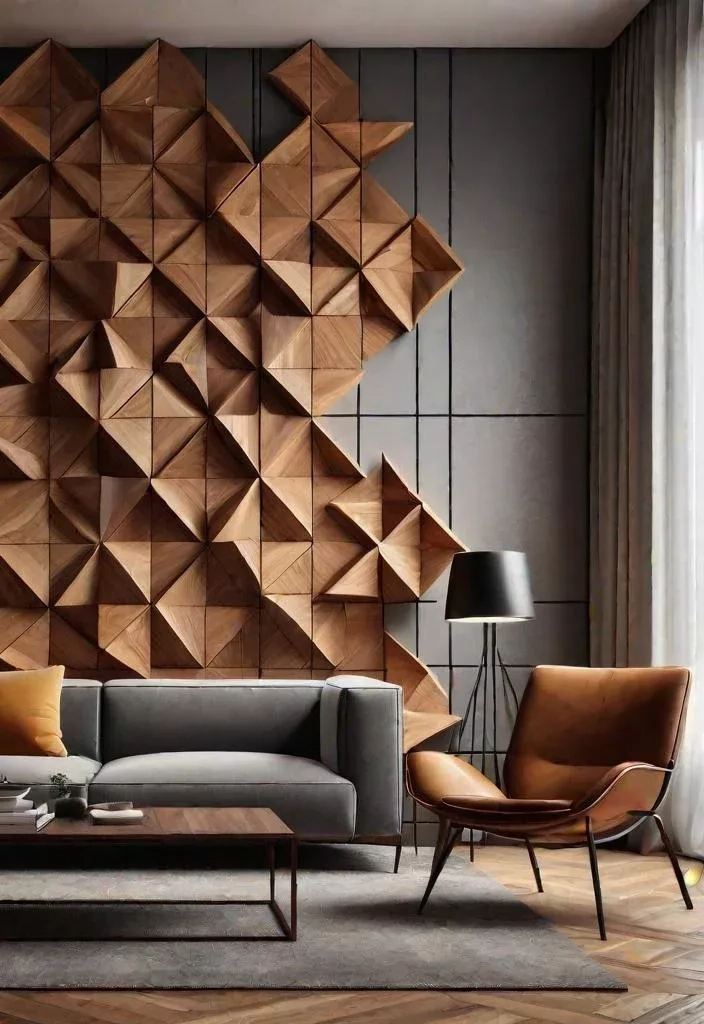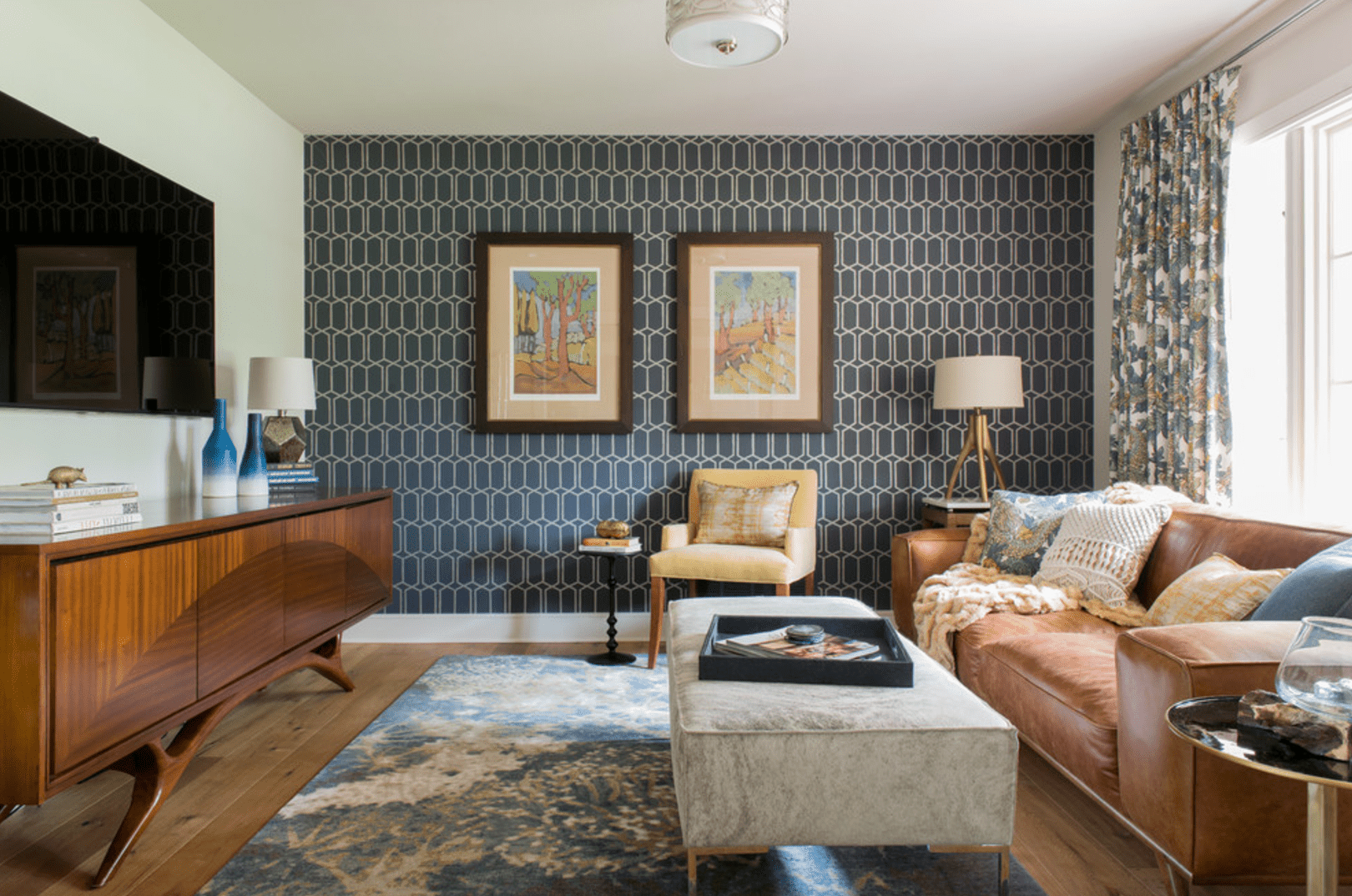There’s something magical about a well-designed accent wall that transforms a room from ordinary to extraordinary. Whether you’re renovating your living room, bedroom, or hallway, the right accent wall can make all the difference. But what makes an accent wall truly timeless? It’s not about following fleeting trends or chasing the latest design fads. Instead, it’s about understanding fundamental principles that have stood the test of time. These classic approaches don’t just look good now – they’ll continue to look fabulous for years to come.
Let’s face it – we’ve all seen those rooms where the accent wall feels like it came straight from a magazine shoot, only to look dated within months. The secret to avoiding that fate lies in choosing techniques that transcend seasonal trends. Timeless accent walls aren’t about being boring or safe – they’re about creating visual anchors that enhance rather than overwhelm. They serve as the perfect balance between bold statement and subtle sophistication. Think of them as the quiet confident friend in a room full of flashy personalities. They draw attention without demanding it, adding depth and character while maintaining harmony with the rest of your space. What makes these techniques so enduring? It’s their ability to work with different styles, colors, and furniture arrangements without feeling forced or outdated.
The Power of Texture and Pattern
Texture creates depth and interest in ways that simple color alone cannot achieve. Think about how a rough stone wall adds warmth to a modern space, or how a subtle linen texture can elevate a minimalist room. Classic textured options include:
- Natural wood planks that bring organic warmth to any room
- Woven grass or rattan panels that add tropical flair
- Textured wallpaper with subtle geometric patterns
- Staggered brick or stone installations that create visual movement.
These materials don’t just look good – they feel good too. The tactile quality of textured surfaces invites people to touch and explore, making the space more inviting. Consider a living room with a textured accent wall behind the sofa. It becomes the perfect backdrop for conversation, creating a sense of intimacy even in a large space. The beauty of texture lies in its versatility. You can use it sparingly for a sophisticated look, or embrace it fully for a dramatic statement. The key is choosing textures that complement your existing furniture and decor rather than competing with them.
Neutral Color Foundations
There’s a reason why neutral colors dominate the world of timeless design. They act as perfect canvases that allow other elements to shine while providing stability to the overall composition. Classic neutral choices include:
- Warm beige tones that create cozy, welcoming atmospheres
- Soft grays that offer sophistication and modern appeal
- Cream whites that brighten spaces and make them feel larger
- Subtle taupe shades that add richness without overwhelming.
These colors work because they’re forgiving and adaptable. They pair beautifully with both bold accent pieces and muted tones. Imagine a bedroom with a soft gray accent wall – it creates a calm retreat that still feels dynamic. The beauty of neutral foundations is their flexibility. You can change your artwork, throw pillows, or lighting fixtures seasonally without worrying about the wall itself. This approach also makes it easier to update your space gradually, focusing on smaller elements first before making bigger changes. Neutral walls become the foundation upon which you build your personal style over time.
Natural Materials That Age Gracefully
Nothing ages better than natural materials. They develop character over time, becoming more beautiful with each passing year. Natural elements bring authenticity and warmth that synthetic alternatives simply cannot match. Consider incorporating:
- Reclaimed wood that tells stories of previous lives
- Stone that showcases the beauty of natural imperfections
- Bamboo that adds modern elegance with organic appeal
- Linen or jute that brings earthy textures to contemporary settings.
These materials age gracefully because they embrace their natural characteristics rather than trying to hide them. A reclaimed wood accent wall doesn’t look rustic – it looks lived-in and loved. The weathering process adds depth and character that no amount of artificial aging can replicate. Natural materials also tend to be more sustainable choices, aligning with growing environmental consciousness. When you choose natural materials for your accent wall, you’re investing in something that will remain relevant as design trends come and go. They speak to our deep connection with nature, which seems to be a constant across all cultures and generations.
Classic Patterns That Never Fall Out of Fashion
While many patterns fade quickly, certain designs maintain their popularity for decades. These classic patterns work because they’re simple enough to feel fresh yet complex enough to provide visual interest. Timeless pattern options include:
- Chevron designs that create movement and sophistication
- Geometric shapes that add modern structure to traditional spaces
- Stripes that elongate and define areas effectively
- Damask patterns that bring elegant luxury to any room.
These patterns don’t need to be bold to be effective. Sometimes, a subtle damask in soft tones can create more impact than a large, garish pattern. The key is choosing patterns that reflect your personal style while remaining versatile enough to work with various other elements. Think about how a subtle stripe pattern can define a dining area or how chevron can guide the eye through a hallway. Classic patterns also allow for easy updates – you can change your accessories and lighting to refresh the entire look without changing the wall itself. This makes them incredibly practical for homeowners who want to keep their spaces feeling current.
Artistic Elements That Tell Stories
Artistic accent walls transform ordinary spaces into galleries that tell stories. They’re not just decorative – they’re personal statements that reflect your interests and experiences. Consider these artistic approaches:
- Large-scale paintings that command attention and create focal points
- Gallery walls that showcase multiple pieces and personal collections
- Mural art that creates immersive environments
- Handmade tiles that add unique character and craftsmanship.
These elements become the heart of the room, drawing people in and encouraging conversation. A well-chosen piece of art can elevate a space from merely functional to genuinely inspiring. The best artistic accent walls are those that complement rather than compete with the room’s existing features. They should enhance the overall design rather than overshadow it. Think about how a carefully selected painting can make a small room feel grand, or how a gallery wall can turn a hallway into a memorable entrance. Artistic elements also age well because they represent personal taste rather than fleeting trends. What matters most is choosing pieces that resonate with you personally, ensuring they’ll continue to bring joy for years to come.
Balance and Proportion Principles
The most successful accent walls follow basic principles of balance and proportion that make them feel intentional and harmonious. These foundational concepts ensure your wall never feels random or chaotic. Key considerations include:
- Size relationships that create visual harmony between the accent wall and surrounding spaces
- Scale that ensures the wall element doesn’t overwhelm the room
- Symmetry or asymmetry that supports the room’s overall flow
- Proper lighting that highlights the accent wall’s features.
The golden rule is to make sure your accent wall enhances the room’s natural proportions rather than disrupting them. A small bedroom might benefit from a narrow vertical stripe pattern, while a large living room could handle a bold geometric design. Balance also means considering how the wall interacts with furniture placement, traffic flow, and existing architectural features. Good design doesn’t just look good – it feels right. When you get the balance right, the accent wall becomes a natural part of the room’s story rather than an added element that feels disconnected.
Practical Tips for Long-Term Success
Creating a timeless accent wall isn’t just about choosing the right technique – it’s also about making smart decisions that ensure longevity. Here are essential tips for lasting success:
- Choose quality materials that will hold up over time
- Plan for future updates by selecting flexible options
- Consider how the wall will look with different lighting conditions
- Test samples in your actual space before committing
- Think about maintenance requirements and cleaning needs.
Remember that a timeless accent wall should require minimal updating to stay relevant. It’s better to invest in fewer high-quality elements than many cheaper alternatives that will need replacement. The most important factor is choosing a style that matches your lifestyle and personality. A busy family home might benefit from durable materials like textured wallpaper or natural wood, while a more formal setting might call for classic paint treatments or artistic elements. Ultimately, the best accent walls are those that feel like they belong there naturally, becoming an integral part of your space rather than a temporary fix.
Creating a timeless accent wall is less about following rules and more about understanding what makes spaces feel alive and personal. It’s about choosing elements that will continue to please you long after the latest design trend fades away. Whether you prefer the warmth of natural materials, the sophistication of classic patterns, or the personal touch of artistic elements, the key is making thoughtful choices that reflect your true style. Remember, the best accent walls don’t try to be everything to everyone – they focus on creating one powerful, cohesive statement that works with the rest of your space. When done right, a timeless accent wall becomes the room’s most memorable feature, one that continues to bring joy and inspiration for years to come. The investment in quality, thoughtfulness, and personal style pays dividends in both aesthetic satisfaction and long-term value. After all, a truly timeless space is one where every element feels like it was meant to be there.















